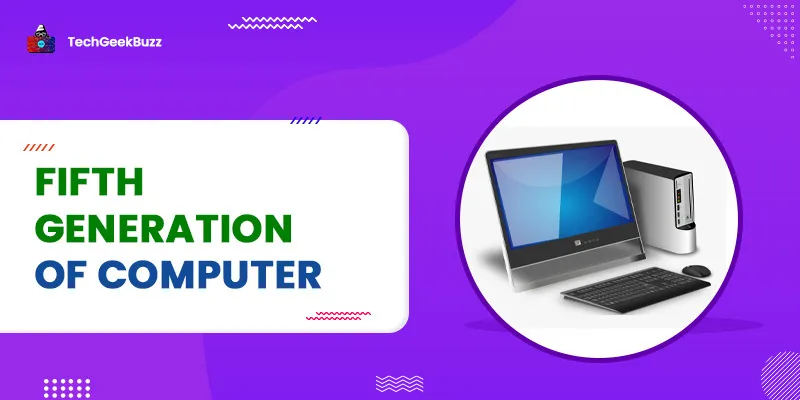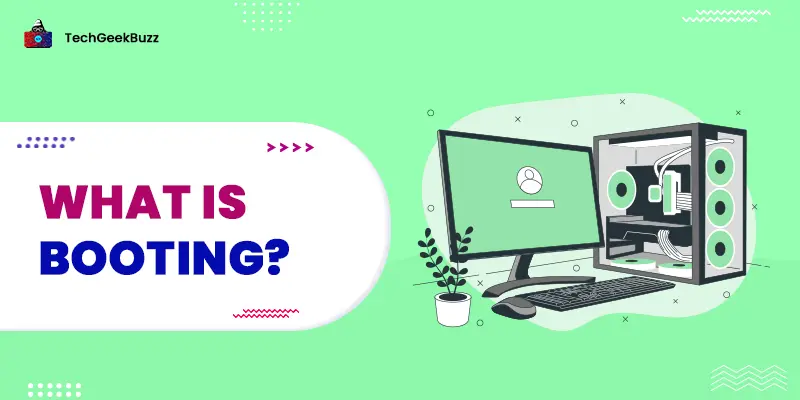Technological advancements and developments have led to different generations of computers . Each generation of computers has used different and more efficient technology than its previous generation. Computers we use today are fifth-generation computers powered by artificial intelligence (AI) and ultra large scale integration (ULSI) technologies.
The fifth generation of computers is considered the most successful one as of now. It is still in the development phase and is set to witness more advanced computers. The use of artificial intelligence has made this generation of computers more robust, smart, and intelligent. They can carry out any complex tasks within fractions of a second.
It is believed that all the previous generations of computers focused on increasing the number of logic elements on a single CPU. In contrast, the fifth generation of computers focused on increasing the number of processors to achieve maximum performance.
This blog post will discuss the fifth generation of computers, its characteristics, advantages and disadvantages, and popular examples.
Fifth Generation of Computer: Overview

The era of the fifth generation of computers began in the 1980s and is still in progress. Japan witnessed the first fifth-generation computer in 1982. We commonly refer to these computers as modern computers. They use artificial intelligence and ULSI as core technologies.
The ultra large scale integration (USLI) technology gave birth to new microprocessors (small semiconductor chips) that hosted around 10 million electronic components.
Artificial intelligence helps machines learn and execute tasks on their own and display accurate output to users. They require minimal human intervention. Hence, we call fifth-generation computers smart and intelligent.
Besides, modern computers use parallel processing hardware that splits a large task into smaller ones and executes them simultaneously on multiple processors. This helps achieve efficiency and enhances performance.
Modern computers support high-level languages like Python, C++, Java, C#, R, etc. Hence, programmers find it easy to provide input to computers and develop software effortlessly.
This generation aims to incorporate artificial intelligence and create powerful machines that every average person finds easy to use. In today’s era, artificial intelligence has left no field untouched. It offers several benefits and has revolutionized every sector.
Characteristics of the Fifth Generation of Computer
Let us dive deeper into the characteristics of the fifth generation of computers.

-
Artificial Intelligence
AI is a groundbreaking technology that helps machines simulate human intelligence. It equips computer systems with the ability to learn and execute tasks.
Advanced deep learning techniques, neural networks , and natural language processing capabilities are all present in fifth-generation computers. Autonomous decision-making, contextual awareness, and cognitive computing are made possible by AI, which imitates human cognitive processes, including learning and reasoning.
Furthermore, AI helps computers improve user interfaces, offer individualized suggestions, and communicate with people invisibly. Robotic systems may be intelligent and adaptable thanks to the tight integration of AI and robotics.
-
Ultra Large Scale Integration (ULSI)
The term "ULSI" stands for ultra-large-scale integration, which describes the placement of many transistors and electronic parts on a single silicon chip. Microprocessors and other semiconductor devices with extreme power and complexity can be created thanks to this degree of integration.
Moreover, ULSI makes it feasible to build processors with many cores and large caches, considerably increasing the processing power and efficiency of the computer.
Fifth-generation computers are smaller and use less power, thanks to the deep component integration made possible by ULSI.
-
Parallel Processing
One essential component that allows for the concurrent execution of several activities is parallel processing. Fifth-generation computers split tasks across a number of processors or cores, distributed computing, and GPU acceleration, improving overall speed and performance.
In order to handle complicated activities in artificial intelligence (AI), big data analytics, scientific simulations, and other areas, parallel processing is essential.
-
Natural Language Processing (NLP)
Fifth-generation computers prioritize Natural Language Processing (NLP), demonstrating impressive breakthroughs in language comprehension and communication. These machines have highly developed NLP algorithms that are capable of deciphering human language with considerable nuance, perceiving context, and understanding purposes for more accurate replies.
These computers employ natural language processing (NLP) for sentiment analysis, assessing feelings and views in spoken or written language, allowing sentiment-based market research and AI decision-making. They are experts at translating text and speech between many languages, eradicating linguistic barriers worldwide.
-
Large Storage Capacity
The fifth generation of computers witnessed significant improvements in storage capacity. These computers use cutting-edge storage technology to provide storage solutions that are substantially bigger and more effective than those provided by their forerunners.
Solid-State Drives (SSDs) have assumed a leading role in the storage industry thanks to their ability to deliver quicker data access and transfer rates with terabytes or even petabytes of storage space in small form factors.
High-capacity Hard Disc Drives (HDDs) still have a place in secondary or archive storage demands, even though SSDs now account for the majority of main storage. Integrating cloud storage will increase available storage space and give customers access to limitless storage options.
-
Optical Fibers
The evolution of data communication and networking is largely due to optical fiber. Fifth-generation computers can deal with enormous volumes of information quickly and reliably because of optical fiber's high-speed data transfer, low latency, and long-distance communication.
Optical fiber is also more secure, immune to electromagnetic interference, and energy-efficient, making it a crucial component for protecting data and reducing power usage.
-
Magnetic Chips
Chips with magnetic capabilities revolutionize data processing and storage in the fifth generation of computers. Faster access times, less power consumption, and better storage densities are all possible benefits of using magnetic chips for non-volatile memory.
By providing effective data transport and storage, they can act as a link between conventional memory and storage components.
Advantages and Disadvantages of the Fifth Generation of Computer
Here are the advantages and disadvantages of the fifth generation of computers:

Advantages
- The use of artificial intelligence has made fifth-generation computers more smart and intelligent that require minimal human intervention.
- These computers are very small in size than their predecessors due to the ULSI technology.
- They are easily available to individual users.
- The processing speed of these computers is blazing-fast. They are more reliable and accurate.
- The GUI of these computers is more user-friendly and intuitive.
- Fifth-generation computers did not generate a lot of heat.
- They are more energy-efficient and cost-effective than all the previous generations of computers.
Disadvantages
- A lot of waste is generated while manufacturing computers. As fifth-generation computers are easily accessible to individual users, this results in negative effects on the environment.
- Automation due to AI has replaced many humans with computers, resulting in unemployment.
- Computers negatively affect human health and the brain.
- There has been an increase in cybercrimes since the widespread use of computers.
Conclusion
This was all about the fifth generation of computers. These computers are smarter and more intelligent than their forerunners due to the incorporation of artificial intelligence. Also, they have a compact size because of the ULSI technology. This generation is still in the development stage. We can exact more intelligent computers in the future.
People are also reading:


![What is an Assembler? [Definition, Working, & Types]](/media/new_post_images/What_is_Assembler.jpg)
![What is I/O? [Types, Examples, & Methods]](/media/new_post_images/What_is_I_O.webp)
